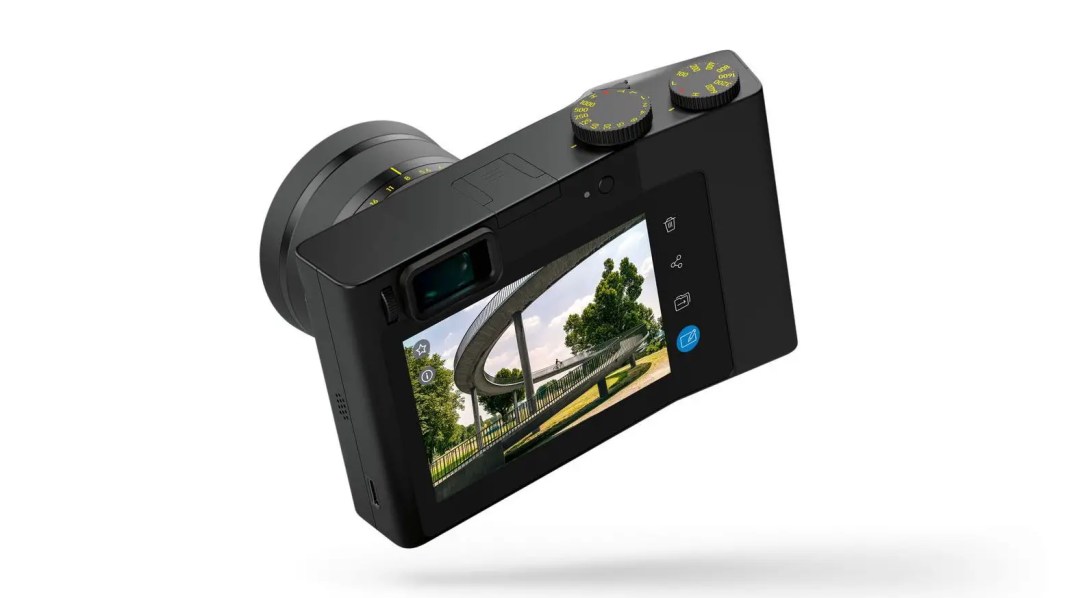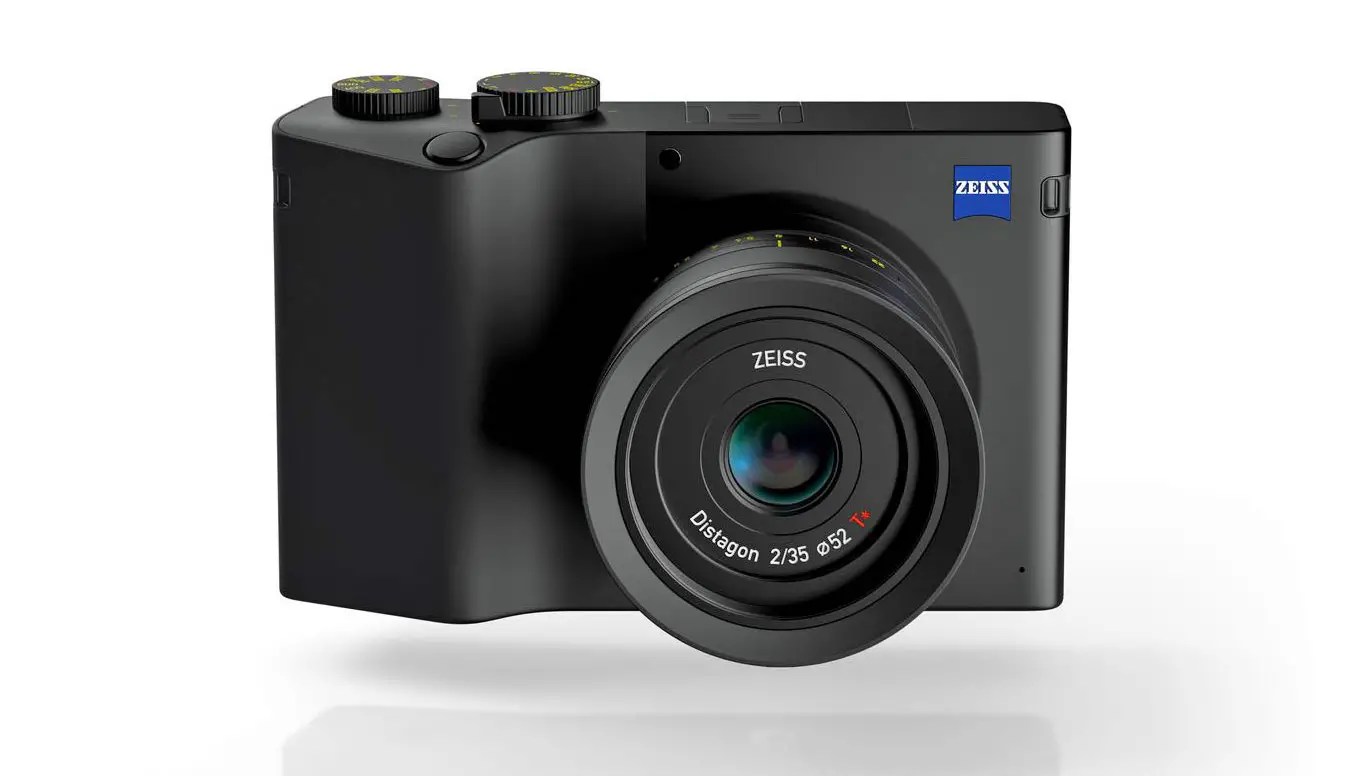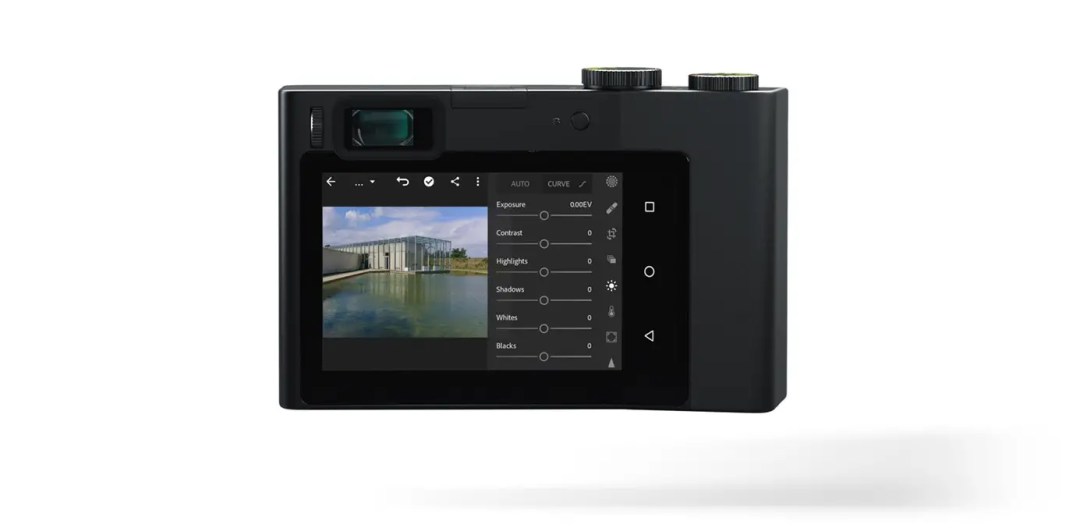In my publicly visible role as a professional camera liker, people on the internet sometimes tell me I’m wrong about things. This happened just the other day when, in my excitement about an upcoming product release, I posted an image on Instagram with a caption saying that I was excited about an upcoming product release. The product in question was the Zeiss ZX1, a full-frame, digital, fixed lens camera with built-in Adobe Lightroom (and many other features).
I don’t mind when people tell me I’m wrong. I actually love it. I often find myself screen-capping dissenting opinions and any particularly insightful or angry comments that come through via the site or through Facebook or Instagram, and especially those that come in via email and private messages (these last ones being extra delightful given the added effort expended by the senders). I use them to think of ways to improve the site, and sometimes for a laugh (many thanks to that guy who told me to give up writing and pursue something else, “such as dying”).
Chill out, man.
But I digress. The point I’m making here is that when I mentioned that the Zeiss ZX1 got me all jazzed up, a bunch of cynical pessimists tried to tell me why I shouldn’t be jazzed (I also read a lot of these anti-jazzed comments on Zeiss’ own and other Youtube videos covering the yet-unreleased ZX1). I should make it clear here that differing opinions are great – I don’t expect the things that jazz me up to be the things that jazz everyone up. But since I have this lovely platform to fling my opinions out into the universe, I thought I’d use it.
Here’s why the Zeiss ZX1 has got me so jazzed up.
I have to stop saying “jazzed up.” Is thesaurus.com a site? Oh, it is. Nice.
Here’s why the Zeiss ZX1 has got me so stoked.

Reason Number One – The Core Product
It’s pretty difficult for my ashen heart to feel anything at all. I spend most of my waking hours waiting for, and then subsequently not being surprised by, the cruel twists of fate with which the unknown and malevolent overlord of the universe tortures us humans. I don’t get excited about much, and I ain’t getting stoked about a camera for frivolous reasons.
Oh, that new DSLR has Wi-Fi? Wow. I’m so stoked [read with sarcasm].
It’s only when a product does something totally new and interesting, or when it performs better than any of its competition, that my icy blood thaws incrementally and I achieve at least a modicum of stoke… stokeness… stoke-ocity?
Amazingly, the Zeiss ZX1 could introduce something totally new and be better than at least some of its competition, at least, on paper. This competition, from a specification standpoint, will be the Leica Q and the Sony RX1R II. Great cameras, but it’s looking like the Zeiss could come out on top, and that’s exciting.
The Zeiss ZX1 will have a 37.4 Megapixel CMOS sensor, which is quite a bit better than the Leica Q’s 24 MP sensor and just slightly worse than the Sony RX1R II’s 42 MP sensor. That’s good, because while image quality isn’t the most important thing in the world, it is really important, and more pixels always helps. By the numbers, the Zeiss holds its own in the sensor war and my stokage only increases.
The RX1R II sports a T* coated Zeiss Sonnar 35mm F/2 lens, while the Leica Q boasts a slightly wider and slightly faster 28mm F/1.7 Aspherical. Those are damn good lenses, and hard to beat. But the Zeiss also features the famous T* coating on its 35mm F/2 (a Distagon in this case), and there’s every reason to believe, given Zeiss’ nearly unmatched history of amazing glass, that we should expect the Zeiss lens to be at least as solid a performer as the ones on those other two cameras.
The Leica Q has a 3.68 MP electronic viewfinder – which is good, at about 1,280 x 960 pixels. But the Zeiss will have a full HD OLED EVF, outputting 1,920 x 1,080 pixels – better than the Leica and likely the equal of the Sony’s pop-up T* coated EVF. The Zeiss will also have a larger screen on the back – 4.34″ compared with the older cameras’ 3″ displays. Like the Leica Q’s screen, the Zeiss’ display is a touch screen, but unlike the Q’s screen, the Zeiss’ screen features a toolbar for instant editing with Adobe Lightroom – more on that later.
The controls on all three cameras embrace the retro-inspired physical controls of cameras past, which is great. If the Zeiss’ controls are as intuitive as the Leica Q’s, that’ll be a draw. If the AF system is as good or better than the Q and the RX1, Zeiss’ camera will completely edge the competition and I’ll be totally stoked.
I really have to stop saying “stoked.”
Give me a moment while I revisit thesaurus.com.
Reason Number Two – Zeiss is Trying Things
The second reason I’m so pumped up about the second coming of our lord and savior, Zeiss, is that they’re trying something risky, new, and different, and that should always be encouraged.
Zeiss hasn’t made a camera since they designed the ZM back in 2004, a 35mm film rangefinder. The Zeiss ZX1 will be their first digital camera, and they’re not playing it safe. They’ve created a really weird camera, and the only way this weird camera is going to be successful is if it’s also very, very good.
What’s weird about it? To start, it’s a fixed-lens camera. In an era where most people are content with the camera inside their telephone, and when professionals and enthusiasts are pretty happy with their DSLRs and full-frame mirrorless cameras, Zeiss is offering hardware that many people could easily argue against. It also has on-board memory (512 GB worth), which is an odd concept that seemingly no camera maker has considered (maybe for good reason). Will it be better than swapping out cards? It could be.
Then there’s the styling. Zeiss could have easily played it safe and jumped face first into the retro aesthetic that initially grabbed everyone’s attention when Olympus made their digital Pen and Fuji launched their X-series. But they didn’t. They chose a totally different angle. The ZX1 looks like a high design concept from ten years in the future. It’s sleek and elegant, and it looks like no other camera out there. Frankly, I’m glad. Classic cameras look great. Modern cameras made to look like classic cameras sometimes don’t. And even if they do, the aesthetic is getting a bit stale.
And of course, there’s that built-in Lightroom and integrated sharing, a key talking point and clearly the hook on which Zeiss is hanging their machine (details just below).
All of this adds up to big risk, and I get pumped up about this kind of risk taking. This is the kind of thinking that pushes everyone forward, and that’s great. But I also know that the people and companies who take these risks often run the blazing trail right off the edge of a gorge. We’ve seen it in every industry. There are plenty of failed visionary product designs lying atop a heap of broken dreams, wetly shining with their creators’ and under-served fans’ tears. The camera business is no different, and the stakes have been historically high; just research the many companies that tried to push forward their idea of a new standard, only to go bankrupt.
Zeiss are asking buyers to spend their money on one camera, one lens, some new ideas – and that’s it. And though what they’ve unveiled has gotten me pretty pumped, it may not be enough to get enough people pumped.
“Pumped” makes me cringe. Surely there’s a better word.
Reason Number Three – the Lightroom Thing
What might be most stimulating about the Zeiss ZX1 is the thing that every Zeiss rep can’t help but mention every forty-three seconds – it’s got Adobe Lightroom built in. The promise, of course, is that this will allow photographers to edit their images and distribute them via email or social media in seconds with its built-in Bluetooth and Wi-Fi. And while the announcement of built-in Lightroom probably moved the eyebrows of very few photo geeks, I think it could be a game-changer if implemented properly.
How to make it a success? That giant screen can’t hurt. The software must be easy-to-use, responsive, and accurate. And it has to save people time. If it does all this, the ZX1 may be the first of many cameras to offer this kind of real, robust editing in-camera. If I can take fifty product photos, edit them in-camera, and send them to my computer as finished images faster than it currently takes me to shoot, upload, edit, and export, that’s going to get me very stimulated.
The Zeiss ZX1 came out of nowhere. It’s trying new things and pushing boundaries. Will this entice enough photo geeks to make the ZX1 a sales success? Only time will tell.
Meanwhile, my contact at B&H Photo has promised to get a review unit into my hands as early as possible. Until then, I’ll happily remain jazzed, stoked, pumped, stimulated (and a bunch of other synonyms for “excited”) waiting for the Zeiss ZX1 to drop in early 2019.
Follow Casual Photophile on Facebook and Instagram
[Some of the links in this article will direct users to our affiliates at B&H Photo, Amazon, and eBay. By purchasing anything using these links, Casual Photophile may receive a small commission at no additional charge to you. This helps Casual Photophile produce the content we produce. Many thanks for your support.]




My problem with these cameras is they’re all gigantic. I know that due to the price point and engineering necessary behind a FF sensor, the camera size and the hyper-corrected fast lens is kind of a must, but I look at any successful film compact with a very simple 2.8 or 3.5 lens that hides inside the body instead of protruding several cm and I wish we got something like that nowadays